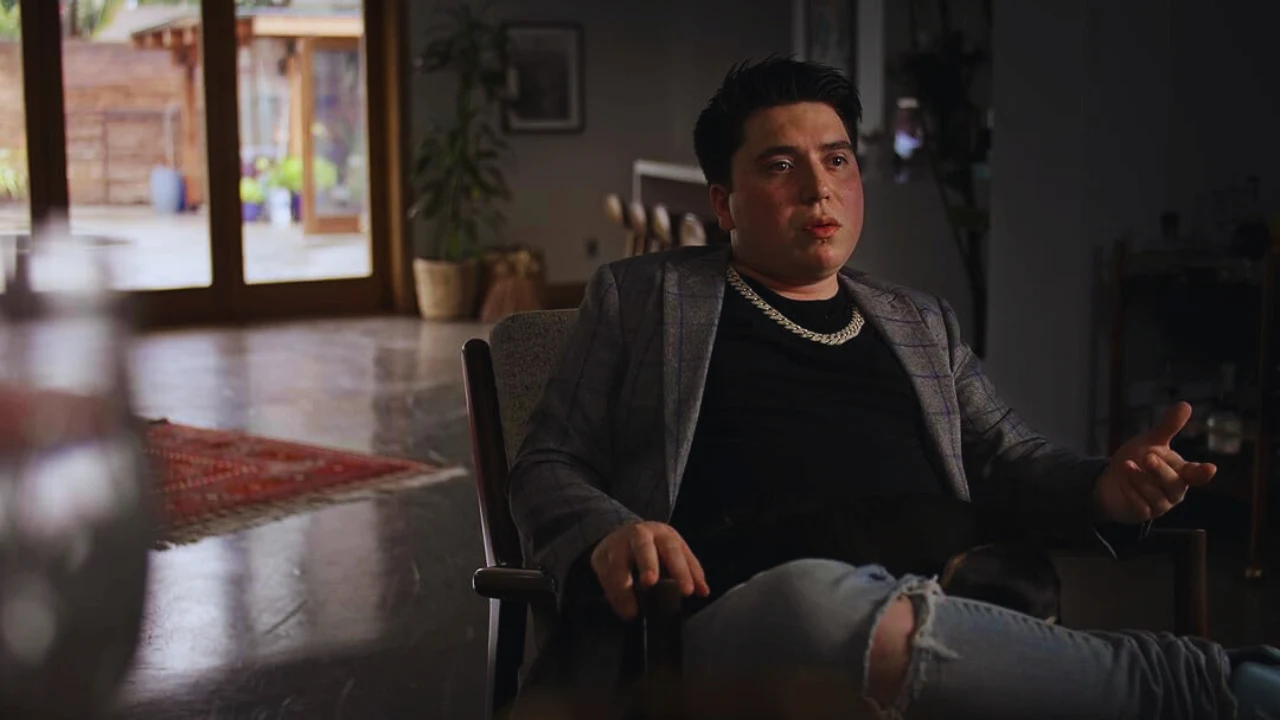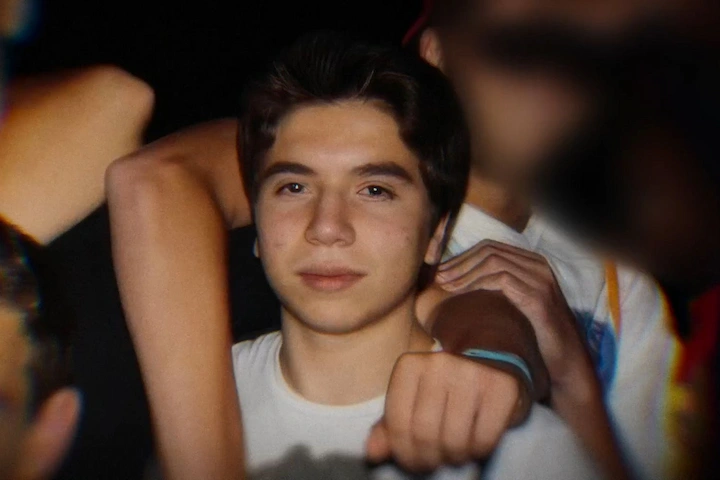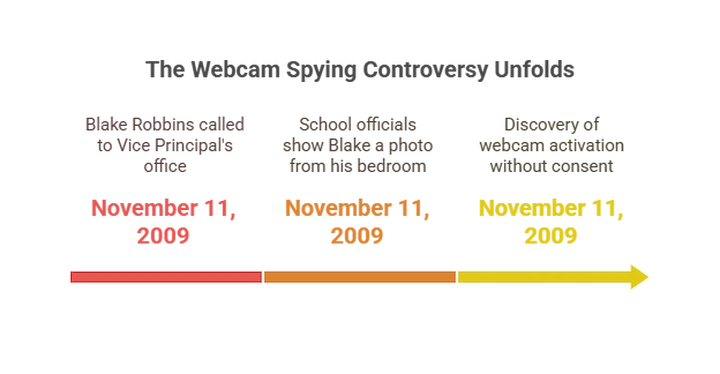Blake Robbins: From School Spy Scandal to Music Industry Leader
The case of Pennsylvania high school student Blake Robbins, who became a victim of unauthorized webcam surveillance in 2010, made national headlines. At just 15, Robbins was accused of drug possession based on images captured without his knowledge in his bedroom.
His story, now featured in Prime Video’s docuseries Spy High, highlights the increasingly common issues of digital privacy and surveillance in schools.
This article examines Robbins’s journey from victim to music-industry executive and congressional candidate, the legal battles he faced, and how his experience reflects ongoing concerns about student monitoring in a digital age.
The Webcam Spying Discovery That Will Shock You
Until November 11, 2009, Blake Robbins was just a typical teen. The student, a sophomore at Harriton High School in Pennsylvania’s Lower Merion School District, was called into the office of Assistant Vice Principal Lynn Matsko that day. What happened next shocked him.
They displayed to Blake a photo taken in his bedroom without his knowing. They used this secret image as evidence that he was using and dealing drugs. The image showed Blake with what officials said were pills.
“I’ve never taken any of those photos,” Blake told investigators. His shock turned to horror when he discovered the school had been spying on him through his school-issued MacBook laptop. The truth? The alleged “drugs” turned out to be Mike and Ike candy. The image was captured secretly when Blake video-chatted with a friend.
The discovery sent ripples through the community. Blake’s parents instantly wondered how school officials had obtained photos inside their home. The family later found out that the district had installed tracking software known as TheftTrack on all school laptops without clearly informing students or parents.
The software could enable webcams to take surreptitious photographs (to supposedly assist in locating stolen computers). The problem? Blake’s laptop had never been reported missing or stolen.
The High-Profile Legal Fight
On February 11, 2010, the Robbins family filed a federal class action lawsuit against the Lower Merion School District. The case quickly drew national media attention, with news outlets dubbing it “WebcamGate.”
Investigations uncovered disturbing figures. The school district secretly took over 66,000 photos of students using their laptop webcams. Of those 2,306 school-issued computers, officials had secretly activated hidden monitoring on 36 laptops without the students’ knowledge or consent.
The FBI opened an inquiry into possible privacy violations. Court documents showed that the school IT staff had saved hundreds of pictures of Blake alone, some showing him sleeping in his bed. As the case unfolded, more students stepped forward.
Talil Hasan, 17, filed his lawsuit after learning he had been monitored. Another student, later identified as Keron Williams, also sued. Many found that a disproportionate share of monitored students were drawn from minorities. The school district has defended itself, saying it used the software only to retrieve lost or stolen computers.
However, emails uncovered during the investigation revealed that district officials knew the location of Blake’s laptop but continued surveilling him nonetheless. Blake did not fare as well under the pressure of national attention. “I was bullied every single day. I was called names in school,” he later said.
Other classmates and members of the community called his family attention seekers and accused them of wanting money, which created a hostile environment. In October 2010, the district settled the case for about $610,000. The rest, after legal fees, $175,000, was put into a trust for Blake. Hasan took away $10,000, and Williams $13,500.
Breaking Free To Start A New Life
Blake grew up and graduated from Harriton High School in 2012; Then, he decided to change his life. He told family members that he wanted to be in Los Angeles. When they dropped him off at the airport, he told them he wouldn’t return.
“I’ve never returned to the place I grew up in until then,” Blake told the news media in recent interviews. The painful memories and community backlash made it too difficult to go back.
Blake spent his early years in Los Angeles making contacts in the entertainment business. It was a difficult time, but he aimed for a clean slate away from the scandal that had marked his teenage years.
In March 2020, he created Out of the Blue Records, where he is currently the Chief Operations Officer and Executive Vice President. The firm has been hugely successful within a very competitive industry.
Through Capitol Records and Def Jam Records, Blake entered into joint venture agreements with Universal Music Group. These partnerships enabled him to work with emerging hip-hop talents such as Kal,n—1TakeJay, and the rap duo BlueBucksClan.
He works in talent development, strategic marketing, brand collaborations, and creative direction. Industry insiders praise his knack for identifying promising artists and maneuvering through an evolving music terrain. “Building a life aligned with who I was has not always been easy,” Blake wrote. “But I’m proud of having made something good out of what happened.”
From Privacy Advocate To Political Candidate
Blake Robbins’s 30th birthday in May 2024 was a big milestone in his life. In addition to his accomplishments in the music world, he recently announced a plan to run for the United States Congress, with the goal of being elected in California’s 30th congressional district.
This political maneuver harkens back to his days working as a privacy advocate. The WebcamGate case raised profound issues about digital surveillance and student rights that are no less relevant now.
“This isn’t the politics as usual,” Blake said of his Congress bid. “It’s using my voice to impact and create lasting change—his platform centers on digital privacy protections, particularly for young people.
Blake, who has witnessed firsthand how surveillance can infringe on personal boundaries, hopes to help shape legislation preventing similar invasions of privacy. Family support has been critical to his journey. Blake has a particularly close relationship with his mother, whom he has dubbed his “favorite woman.”
The decline of the lawsuit’s mitten-covered Muppet made the liveliest of all the ones involved, and her support through the difficulties brought some stability on the hardest days. Blake’s loyal dog, Ozzy, keeps him company all day, whether working late at the record label or campaigning for his congressional run.
The Case Against Surveillance At School
Blake’s case is over a decade old, but student monitoring has only proliferated. Research featured in the “Spy High” docuseries shows that nearly 88% of schools utilize some monitoring software.
This trend was accelerated by the COVID-19 pandemic when remote learning became a necessity. According to the Center for Democracy & Technology, around 23 million students are enrolled in public schools that systematically monitor their activities online.
Modern monitoring software can flag certain words and phrases, which sometimes have troubling results. Programs that block words like “gay,” for instance, have resulted in unwittingly outing students, as happened to Leo Holcomb in Minneapolis.
Blake’s experience is already sending an early warning about the potential hazard of unchecked surveillance. Although schools cite safety concerns to justify monitoring, the line between protection and invasion of privacy is blurry.
Yet, despite growing concerns, few laws govern how schools monitor students. Only a few states, including Minnesota (where students such as Holcomb and his friend Charlie Schmidt helped ban this sort of software), have laws limiting surveillance practices.
Everything You Need To Know About Blake Robbins and WebcamGate
What exactly was Blake Robbins’ school accusing him of?
The school officials indicted Blake for using and selling drugs based on the webcam images they had secretly photoshopped from his school-issued laptop. The “drugs” ended up being Mike and Ike candies he was eating during a video chat with a friend.
How many photos did the school district capture without the students’ knowledge?
Investigators found that the Lower Merion School District surreptitiously took more than 66,000 pictures from student laptops. In Blake’s case, the school took hundreds of photos, including some of him asleep.
Was the school charged with a crime for spying through a webcam?
The FBI investigated whether anything violated privacy laws but filed no criminal charges against the district. Investigators said they could not determine there was criminal intent behind the surveillance.
How much money did Blake get from the settlement of the lawsuit?
The total settlement amount was $610,000. After legal fees, the money was put in a trust for Blake, $175,000 of which was placed in a trust for him. Other students who sued received lesser amounts.
What’s Blake Robbins doing today?
Now, Blake is the Chief Operations Officer and Executive Vice President of Out of the Blue Records, the music label he created in 2020. He collaborates with hip-hop artists via joint ventures with Capitol Records and Def Jam. He has also announced his candidacy for the 30th Congressional District of California.
Final Words
After a privacy violation, Blake became a music executive and political aspirant, highlighting how dark experiences can lead to brighter futures. The WebcamGate scandal sparked a national conversation about digital privacy, especially concerning student monitoring tools.
Blake’s journey illustrates the need to balance security and privacy, especially for young individuals who may not fully grasp their rights. As he plans for a congressional run, his insights on privacy may shape future policy. His story reminds us that standing up against violations can have far-reaching impacts.
The lessons from WebcamGate remain crucial in today’s surveillance-driven world. Blake asserts, “It’s about ensuring what happened to me is not happening to others,” underscoring his commitment to privacy rights.
Table of Contents



